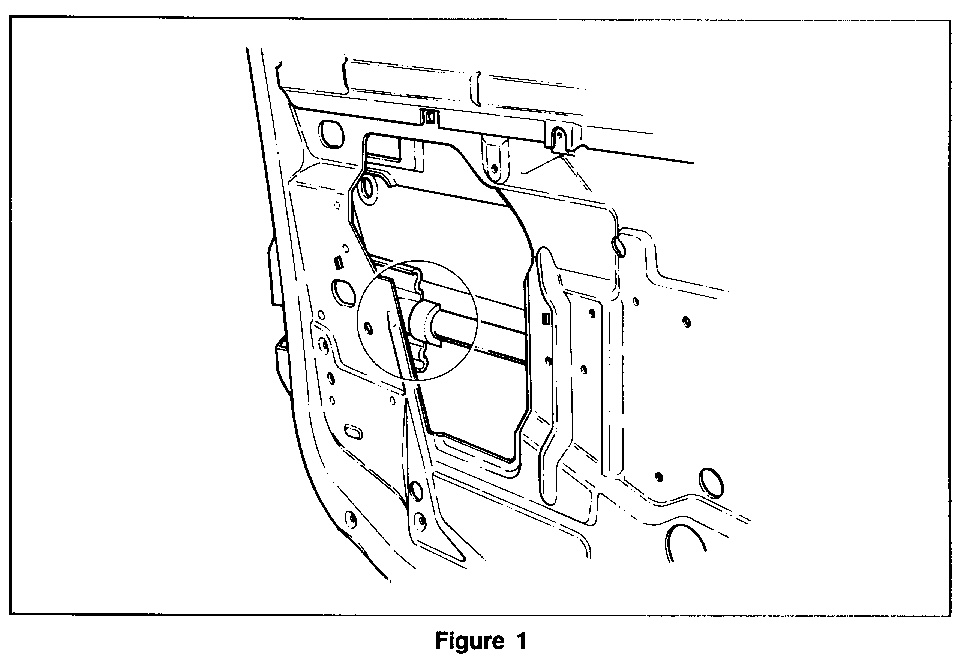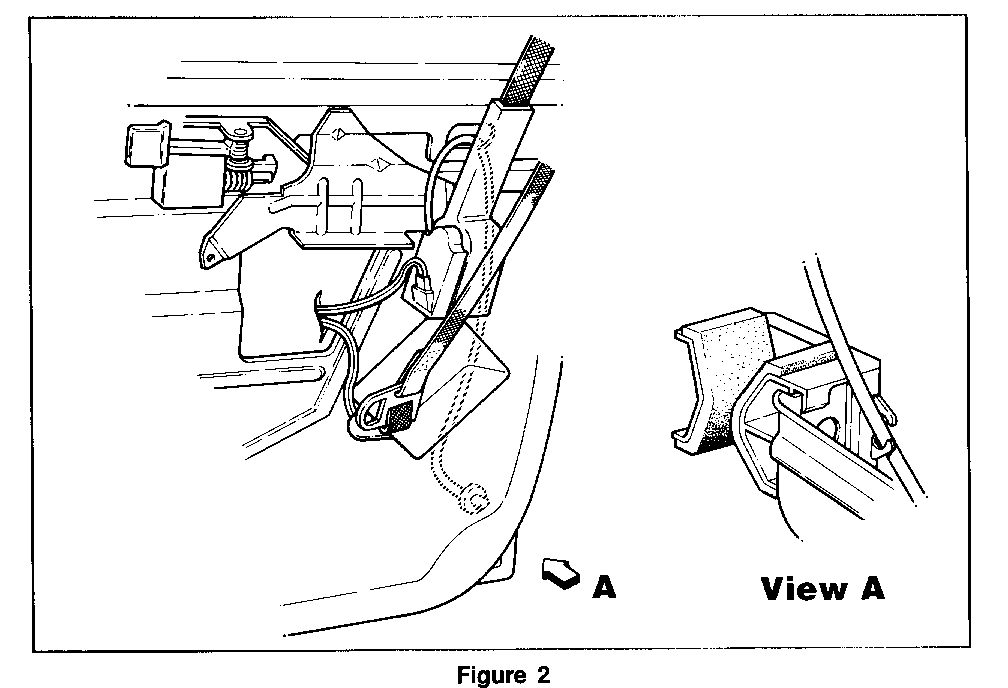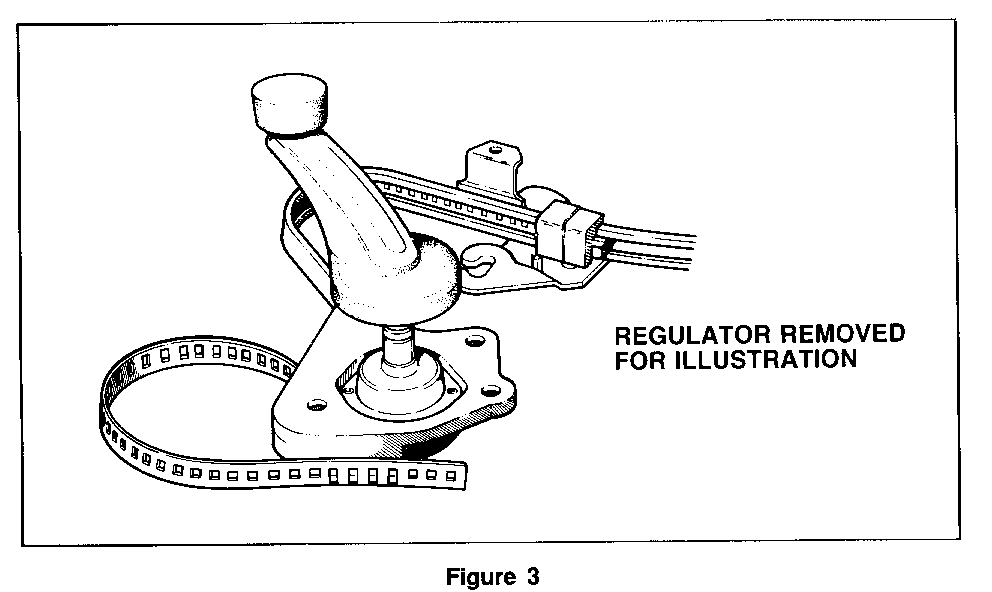DOOR GLASS RATTLE DIAGNOSIS & REPAIR

Model and Year: 1990 W CAR
THIS BULLETIN CANCELS AND SUPERSEDES DEALER SERVICE BULLETIN NO. 90-15-10, DATE JUNE 1989. THE LABOR OPERATION NUMBER HAS BEEN CORRECTED. ALL COPIES OF 90-15-10 SHOULD BE DISCARDED.
If customer comments are received about the conditions listed below, the following should be inspected at the time of repairs.
1. FRONT DOOR GLASS "RATTLE" GLASS IN HALF UP/GLASS IN QUARTER UP POSITION WHEN CLOSING DOOR.
A. Glass rattle in half up position may be corrected by the replacement of the outside remote handle rod which comes in contact with the rear edge of the glass in the half up position. New remote handle rods available through GMSPO have been revised to provide sufficient clearance at the rear edge of the door glass.
The outside handles have adjustable outside handle to lock rods. This allows for adjustment of the amount of effort needed to operate the outside handle.
When servicing a vehicle with adjustable outside handle to lock rods, it is important that all free play between the outside handle and the lock assembly be removed.
ADJUSTMENT: Adjust nut on lower end of rod on sedans until knob of attaching nut is between one and two turns lower than the hole in lever of sedan lock, snap nut into hole and engage clip onto lever and rod assembly.
Right Hand Remote Handle Rod, P/N 20619578
Left Hand Remote Handle Rod, P/N 20619579
B. Glass rattle in quarter up position may be caused by the glass coming in contact with the door side impact bar at the rear of the door when closing and may be corrected by installing a "clip on" rubber barrier at the rear portion of the side impact bar. See Figure 1.
Barrier P/N 10155652
2. FRONT DOOR GLASS "THUMP" WHEN GLASS IS ROLLED DOWN.
This condition may be caused by a misrouted comfort lock release cable, which when installed incorrectly bows outboard towards the glass. When the glass is rolled down the glass run channel comes in contact with the comfort lock release cable causing a thump noise.
Refer to figure for proper routing, if misrouted refer to procedure below.
A. Remove trim panel and water deflector.
B. Remove retainer on remote cable plunger.
C. Remove plunger end from improper routing.
D. Route comfort lock release cable through access hole in door inner panel. See Figure 2.
E. Make sure excess cable is pulled to the boftom of the door, snapped into clip on glass stabalizer assembly. See Figure 2, view A.
F. Insert plunger through lower rear hole in door inner panel. Assemble retainer over plunger and screw retainer until fully secured.
G. Reinstall water deflector and trim panel.
3. REAR DOOR GLASS RATTLE IN FULL DOWN POSITION WHEN CLOSING DOOR.
If customer comments about rear door glass rattle with glass in full down position it may be caused by the rear of the glass coming in contact with the lower rear portion of the side impact bar attachment.
The following procedure should be used to repair this condition.
A. Remove trim panel and water deflector.
B. Lower glass to the full down position.
C. Remove tape from regulator tabs using flat bladed screwdriver.
D. Refer to Figure 3 showing tape reinstalled on regulator tabs, three notches shorter which limits the down travel of the rear glass.
IMPORTANT: Manual regulator shown, when service is performed on power window regulators make sure tape is installed through guide on back of regulator.
E. Reinstall water deflector and trim pad.
Labor Operation: Right Front T1472 Left Front T 1473
Front Door Outside Handle/Lock Rod - R&R .4 Hour
Add: To install Barrier .1 Hour
To Reroute Cable .1 Hour
Labor Operation: Right Rear T1474 Left Rear T1475
Repair Rear Door Glass Rattles .4



General Motors bulletins are intended for use by professional technicians, not a "do-it-yourselfer". They are written to inform those technicians of conditions that may occur on some vehicles, or to provide information that could assist in the proper service of a vehicle. Properly trained technicians have the equipment, tools, safety instructions and know-how to do a job properly and safely. If a condition is described, do not assume that the bulletin applies to your vehicle, or that your vehicle will have that condition. See a General Motors dealer servicing your brand of General Motors vehicle for information on whether your vehicle may benefit from the information.
